Matador Network's Blog, page 2225
August 19, 2014
Is travel ever immoral?

Photo: Susana Fernandez
If there’s one thing that guided my transition from being just an absolutely awful adolescent to becoming a middlingly decent and globally conscious adult, it was travel. In my early 20s, I spent a lot of time abroad in developing countries, and that time basically dismantled everything I thought I knew about the world. I was forced to put my world back together in a way where I was no longer at its center, and where my culture no longer took precedence over everyone else’s.
So it rattled me a bit when, during a trip to Southeast Asia back in 2007, I was told that to go to Burma would be to go there against the wishes of the country’s pro-democracy group, the National League for Democracy, and against the wishes of their leader and Nobel Peace Prize winner Aung San Suu Kyi. They had apparently asked that people not visit so as not to support the brutal military regime in power in the country. Since then, Aung San Suu Kyi has changed her mind on tourism, and the country has begun major democratic reforms. But back in 2007, my fellow travelers and I debated the don’t-travel-to-Burma request, comparing it to the apartheid-era “cultural embargo” in South Africa.
We basically kept arguing about it until it was no longer an issue. No agreement was ever reached, and I still wonder: Is it ever truly “immoral” to travel somewhere? Does a local population requesting that you don’t come to their country morally obligate you to stay away? What other circumstances could raise a moral red flag among travelers? Thinking about this over time, I’ve developed two personal rules to decide if a trip is morally problematic or not.
#1: The House Guest Rule
There’s a very basic way to decide if you should go somewhere or not, and I call it the House Guest Rule. When Westerners — especially Americans — think of travel, they often think of it in terms of capitalism. The idea is that I’m going to this country, I’m putting money into this country, and the locals providing me with a service and a product by hosting me. In that mindset, travel is never “right” or “wrong,” as long as you fully compensate people for their service (their hosting duties) and their product (their country and culture).
This is a horrible way to think about travel. Travel isn’t like buying fruit from a shop — you’re basically entering someone else’s home. So you should behave less like a customer and more like a house guest. You wouldn’t go to a friend’s home and not make the bed or leave a mess in the bathroom (I mean, you might, but then you’d be a shitty house guest). And you wouldn’t ask your friend if you could come and, if they said it was a bad time, still barge into their home anyway.
Obviously it isn’t always that simple — after all, a country isn’t just a few people in a household, but often millions of people with different backgrounds and interests. But this way of thinking about travel goes a long way towards behaving more ethically.
#2: The More-Harm-Than-Good Rule
It’s impossible to travel somewhere and not do a little bit of harm. Whether it’s the fact that your mode of travel probably did at least some environmental damage, or the fact that you’re one among many tourists, and those other tourists may have fewer scruples than you — maybe they patronize the local sex trade, maybe they do damage to cultural sites when they visit. Or maybe the heavy presence of tourists precipitates a harsh police crackdown on the local poor or homeless. You’re always going to have an effect on the place you visit, regardless of the size of your footprint.
But that’s just a part of life in general. It’s impossible to live a totally ethical life in a globalized world without living in the woods and never buying anything; you shouldn’t expect your presence in another country to be all good.
What you should do is try to tip the scales towards good. First, try to travel as green as possible, and second, try to patronize local vendors rather than big tour companies. Don’t visit hotels or vendors that treat their workers poorly or have no regard for the surrounding environment. And then behave respectfully when you get there. That may be enough to tip the balance.
If I can’t make my travel plans work within these two rules, I don’t go. It doesn’t usually result in me not going on a trip, but I probably can’t go to the next two World Cups. Regardless of what your personal rules might be, it’s good to have them. Travelers often think of travel as an exclusively good thing, and it’s not. It’s a moral choice, and it’s something we should be thinking about. 

30 of the most picturesque glaciers around the globe
Freezing temperatures and precipitation mix to create one of nature’s most impressive art forms. Found from Mexico to the Himalayas, from East Africa to Tierra del Fuego, glaciers exist in various forms and colors — ice caps, ice fields, ice sheets, ice shelves, and ice streams in all shades of blue and white.
99% of the glacial ice on Earth is found within the ice sheets in our polar regions. What about the remaining 1%? They’re scattered around every continent but Australia.
Unfortunately, the majority of glaciers have been receding rapidly since 1850 due to global temperature changes. Check out 30 of the most picturesque glaciers around the planet to find your inspiration and get going before they disappear. 

1
Jakobshavn Glacier, Greenland
10% of Greenland’s icebergs are produced by the Jakobshavn Glacier. Many of the icebergs (like that pictured above) are of massive proportion, reaching a kilometer in height.
Photo: Baron Reznik

2
Mendenhall Glacier, Alaska
Located 12 miles from Juneau, Alaska’s capital, Mendenhall Glacier is 12 miles long. More experienced climbers can ascend into the ice caves beneath the glacier.
Photo: via

3
Perito Moreno Glacier, Argentina
One of the most visited attractions in Argentine Patagonia, the Perito Moreno Glacier is a short drive from El Calafate and is the third-largest reserve of fresh water in the world.
Photo: Trey Ratcliff
Intermission
4
40 bizarre roadside attractions around the US
by Joe Batruny
3
33 colossal monuments and statues around the world
by Joe Batruny
4
A visual guide to non-monogamy around the world
by Claire Litton-Cohn
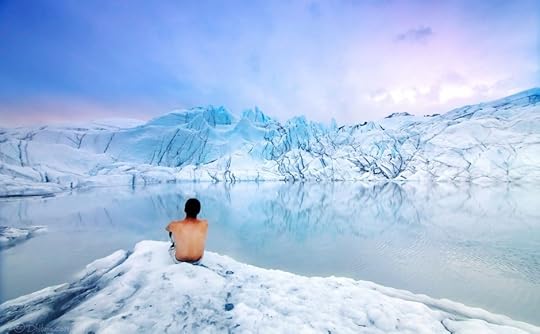
4
Matanuska Glacier, Alaska
Alaska's Matanuska Glacier measures 27 miles in length and four miles in width, making it the largest glacier in the United States accessible by car.
Photo: Dhilung Kirat
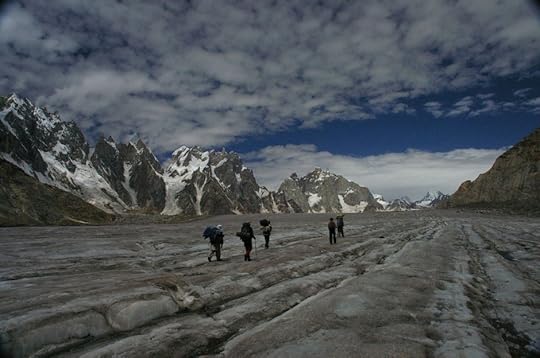
5
Biafo Glacier, Pakistan
Situated in the mountains of Pakistan, the Biafo Glacier is the world’s third-longest glacier outside of the polar regions, at 42 miles long.
Photo: Ben Tubby

6
Kaskawulsh Glacier, Canada
The Kaskawulsh Glacier flows into the Yukon Territory’s Kluane Lake, with 80% of the glacier’s meltwater reaching the lake. The remaining 20% flows into the Pacific Ocean via the Kaskawulsh and Alsek Rivers.
Photo: Richard Droker

7
Pastoruri Glacier, Peru
The Pastoruri Glacier, located in the Andes, is popular with tourists, snowboarders, and ice climbers. 22% of Peruvian glaciers’ surface area has disappeared over the past 30 years.
Photo: Ministerio del Ambiente
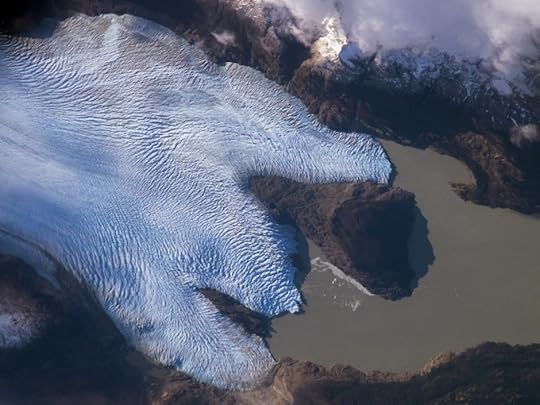
8
Grey Glacier, Chile
Part of the South Patagonian Ice Field and found in Torres del Paine National Park, the Grey Glacier (seen from space in the image above) flows into Grey Lake. The glacier measures 30 meters high and six kilometers wide.
Photo: NASA Earth Observatory
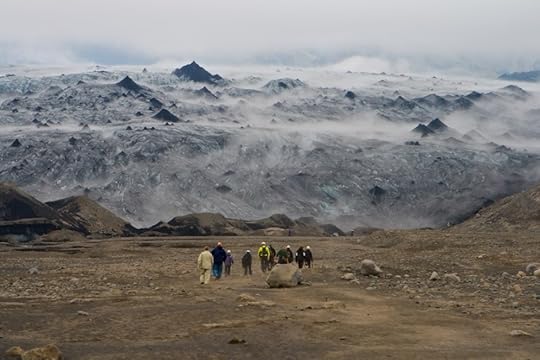
9
Vatnajökull, Iceland
Vatnajökull is the most voluminous glacier in Iceland—it covers over 8% of the entire country. The average thickness of the glacial ice is 1,300 feet.
Photo: Alain Tougas
Intermission
4
The world’s most expensive cities, 2010 edition
by Sarah Park
15 enchanting places around the world you’ve probably never been
by Joe Batruny
4
17 of Southeast Asia’s most photogenic temples
by Joe Batruny
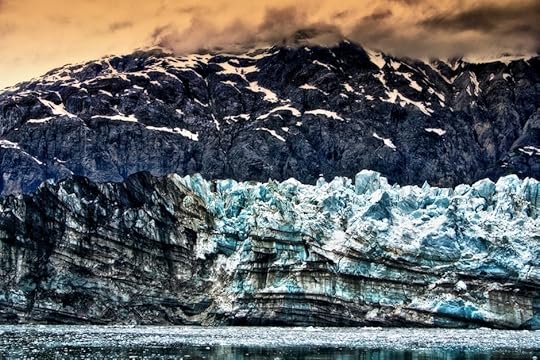
10
Margerie Glacier, Alaska
Declared a UNESCO World Heritage Site in 1992, Alaska’s Margerie Glacier is a tidewater glacier that measures 21 miles long. A study of Glacier Bay’s geology reported that the glacier contains significant copper deposits.
Photo: Jarrod Erbe

11
Aletsch Glacier, Switzerland
Aletsch is the largest glacier in the European Alps, covering over 46 square miles. The surrounding Jungfrau-Aletsch protected area was declared a UNESCO World Heritage Site in 2001.
Photo: Daniel Pfund
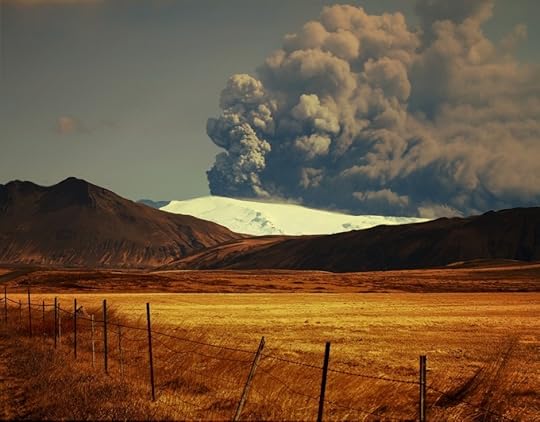
12
Eyjafjallajökull, Iceland
Icelandic for “island mountain glacier,” Eyjafjallajökull is one of Iceland’s smaller ice caps, which covers the caldera of a volcano (often resulting in the glacier being covered in ash). The volcano last erupted in 2010.
Photo: Sverrir Thorolfsson
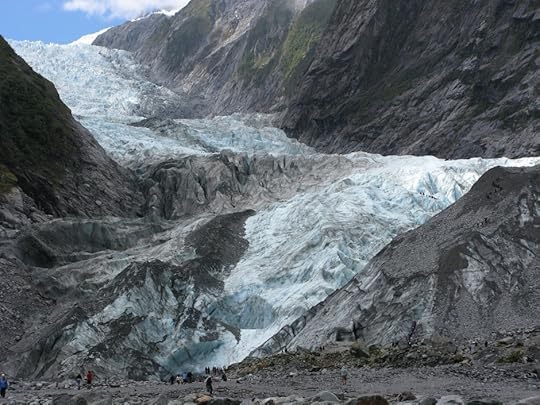
13
Fox Glacier, New Zealand
Found in Westland Tai Poutini National Park on New Zealand’s South Island, Fox Glacier is fed by four alpine glaciers. In contrast with most glaciers, Fox Glacier has been advancing since 1985.
Photo: Will Prescott

14
Saskatchewan Glacier, Canada
Known for its blue-green glacial-fed lakes, Alberta’s Banff National Park is home to the Sakwatchewan Glacier. The glacier is the main source of water for the North Saskatchewan River.
Photo: Christie

15
Midui Glacier, Tibet
Midui Glacier is located in Tibet’s Yupu Township. The elevation of the glacier’s main peak is over 22,000 feet. It was only opened to tourists in 2007.
Photo: Jan Reurink
Intermission
10
40 of the world’s most impressive “second cities”
by Alex Scola
3
30 of the world’s most impressive ancient ruins
by Joe Batruny
Africa’s most daunting challenges in 30 pictures
by Rory Moulton
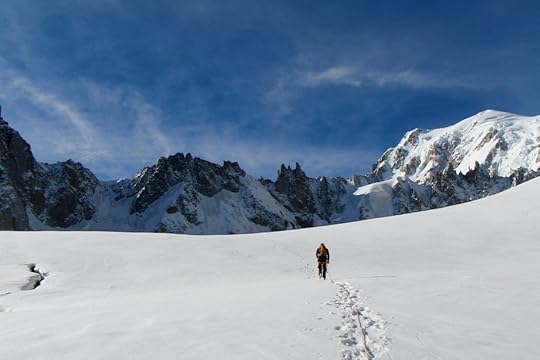
16
Glacier du Géant, France
The Glacier du Géant is found on the French side of the Mont Blanc. The glacier feeds the Mer de Glace (“sea of ice”), which is the longest glacier in France.
Photo: Masa Sakano
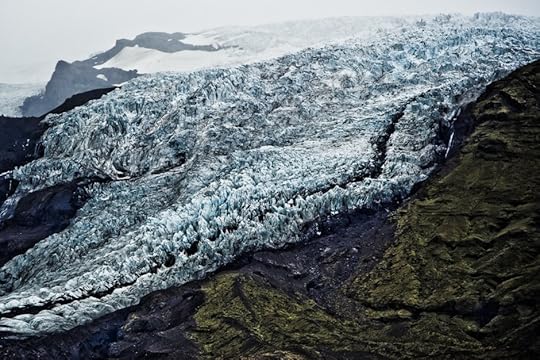
17
Skaftafellsjökull, Iceland
Found in Skaftafell, a preservation area and national park in southeast Iceland, Skaftafellsjökull has receded significantly in recent years but remains a sight to see.
Photo: batintherain
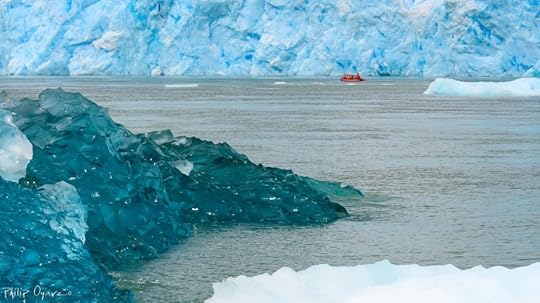
18
San Rafael Glacier, Chile
The San Rafael Glacier in southern Chile juts 200+ feet out over the water. Visitors can witness it up close on a cruise, or get an even closer look via motorized inflatable boat.
Photo: Philip Oyarzo Calisto
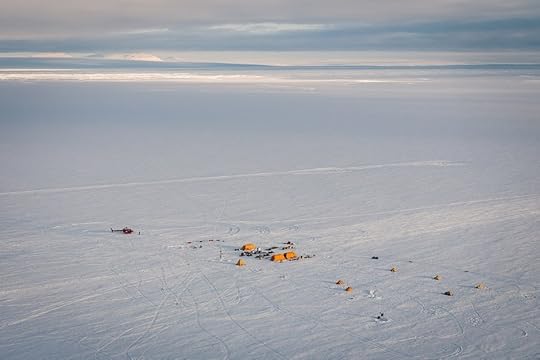
19
Pine Island Glacier, Antarctica
One of Antarctica’s many glaciers, Pine Island Glacier is a remote ice stream. The nearest frequently occupied research station is Rothera, which is over 800 miles away. No country claims the area.
Photo: August Allen

20
Hubbard Glacier, Alaska
Hubbard Glacier is located in eastern Alaska and part of Canada’s Yukon Territory. North America’s largest tidewater glacier, Hubbard measures 76 miles long by seven miles wide.
Photo: Wrangell-St. Elias National Park

21
Victoria Glacier, Canada
Victoria Glacier sits above Lake Louise in Alberta’s Banff National Park. The color of the lake is derived from rock flour deposited into the lake by glacial meltwater.
Photo: David Grant

22
Surprise Glacier, Alaska
The Surprise Glacier is part of Alaska’s Denali National Park and Preserve. The glacier is known for being an extraordinary site to witness glacier calving.
Photo: Jiuguang Wang
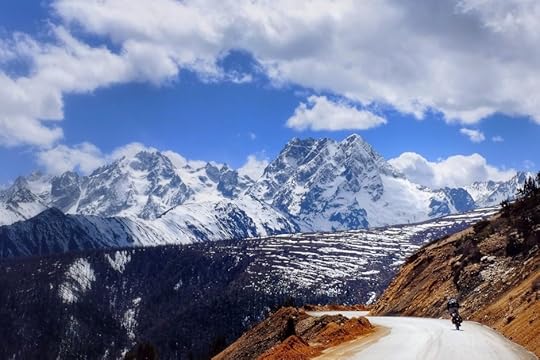
23
Yulong Glacier, China
Known as Jade Dragon Snow Mountain in English, the Yulong Glacier reaches an elevation of 12,000 feet.
Photo: Pete Robbins
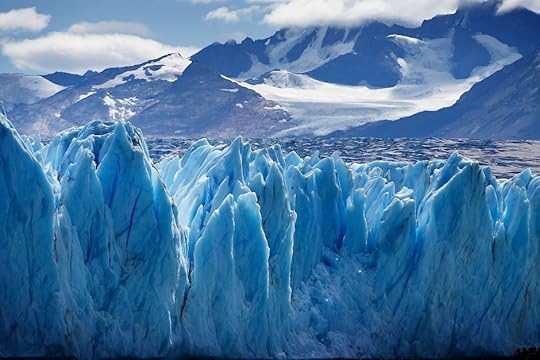
24
Upsala Glacier, Argentina
Located in Los Glaciares National Park, the Upsala Glacier is also part of the Southern Patagonia Ice Field. The glacier feeds the better-known Perito Moreno Glacier.
Photo: David
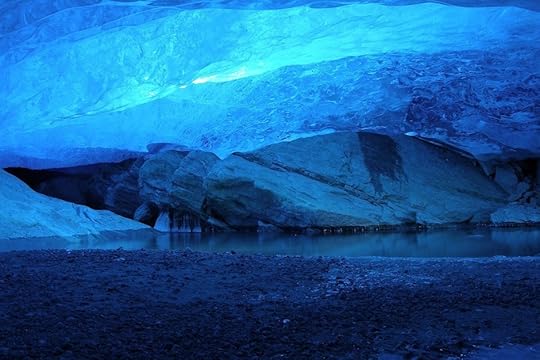
25
Nigardsbreen, Norway
Nigardsbreen is an arm of Norway’s much larger Jostedalsbreen, located in Jostedalsbreen National Park. Sizeable ice caves can be found underneath the Nigardsbreen glacier.
Photo: Guttorm Flatabo

26
Franz Josef Glacier, New Zealand
Located in the same national park as Fox Glacier, Franz Josef sits 12 miles to the north. It has gone through a cyclical pattern of advance and retreat in the recent past.
Photo: Tom Coates

27
Baltoro Glacier, Pakistan
The Baltoro Glacier is found in Pakistan’s mountainous region of Baltistan. The glacier flows into the Shigar River.
Photo: Guilhem Vellut

28
Pasterze Glacier, Austria
Pasterze Glacier is the longest in Austria, measuring 5.2 miles in length. But not for long—the glacier decreases in length by roughly 33 feet each year.
Photo: foto11gen
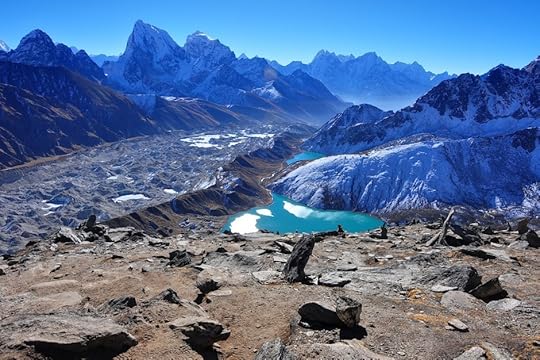
29
Ngozumpa Glacier, Nepal
The Ngozumpa Glacier is the Himalayas’ longest, sitting beneath Cho Oyu (the sixth-highest mountain in the world). The glacier, which flows rather slowly, deposits into a meltwater lake named Spillway.
Photo: Nucksfan604

30
Furtwängler Glacier, Tanzania
Furtwängler Glacier sits at Mount Kilimanjaro’s summit. A striking casualty of climate change, the glacier is expected to melt completely by 2020.
Photo: Gerald Davison

August 18, 2014
On yoga as a treatment for addiction

Photo: Giuseppe Chirico
I think it’s safe to say most people in the Western world know someone who struggles or who has struggled with substance abuse. In my modest 25 years, I’ve personally lost count of all the people who’ve come in and out of my life high as a kite on a regular basis. And two people from that group have deeply impacted my life, as I’ve been a close witness to their ongoing struggle. Although this problem is rampant in our population, there seems to be only one mainstream-encouraged road to recovery: the 12-step program.
According to Social Work Today, 12-step recovery programs, like the one created by Alcoholics Anonymous (AA), depend on the individual seeking outside help rather than focusing on making the change from within. Addicts are told to primarily depend on their sponsors, therapists, doctors, medications, and local meetings instead of their own minds. These programs also rely heavily on the belief in a higher power. In fact, the second step of the Alcoholics Anonymous program literally instructs us “to believe that a Power greater than ourselves could restore us to sanity.”
So where does that leave those who don’t want their recovery to depend on a “Higher Power” that’s totally outside of their body and may or may not even exist?
Laura Didyk, writer of the Kripalu column “Off the Mat”, tells us that “the Eastern perspective on addiction is that it’s not a separate ailment, but rather a condition on the continuum of human suffering.” What’s missing from the typical Western 12-step method is the mind and body connection.
Yoga and meditation, traditions that date back more than 5,000 years in the East, allow us to acknowledge this important inner relationship. They teach us to look within ourselves and realize we’re not “powerless” in the face of our addictions, as the first step of AA suggests. Which is why many forward-thinking doctors, psychologists, and social workers are finally starting to borrow a few lessons from the East and suggest that yoga be an important supplement to the Western 12-step methods we’ve come to so heavily depend on.
Scientists believe that addicts abuse because they’re self-medicating. There’s something physical, mental, or even spiritual missing from their lives.
Norway is setting a clear example. Back in the Ring is a nonprofit organization in Oslo that gathers heroin addicts together to regularly practice Ashtanga, an extremely vigorous and regimented form of yoga. The participants practice for several hours a day, five times a week. They meditate, share meals together, are taught yogic philosophy, and spend off-days hiking, camping, volunteering, and working on local farms. After two months, the most dedicated individuals are sent to Mysore, India, to practice for four hours a day and work for six, building shelters for India’s homeless.
While Back in the Ring is funded by generous donations, many other organizations aren’t as lucky. Keeping in mind that the majority of addicts are most likely hard up for cash, the question definitely seems to be: How will an addict afford yoga, an activity that’s often associated with an upper-middle-class lifestyle?
As this innovative thinking catches on, there are resources popping up. Y12SR: Yoga for the 12-Step Recovery is a donation-based program created by Nikki Myers. Myers states on her website that although a suggested donation is about $8-$20, “no one is ever turned away. You are more important than your money.” Her program began in 2008 and is now taught all over the US.
Scientists believe that addicts abuse because they’re self-medicating. There’s something physical, mental, or even spiritual missing from their lives. So they use drugs and/or alcohol to make up for it. Yogis believe the mind and the body are not separate — if the body feels a loss, the mind feels that same loss. Yoga and meditation train the mind to recognize and accept these voids in our lives rather than try to fill them with hurtful addictions.
If you’ve ever attended a yoga class, you’ve been instructed to “breathe.” Just as breath is essential to life, it’s essential to yoga. Each time we do yoga, we’re problem solving — adjusting our asanas to better suit our bodies, learning how to make our breathing deep so it can carry us through discomfort, and even stopping completely if we realize we’re in pain.
Yoga as a form of substance-abuse treatment is a fairly new idea, especially in the US, where anything can be solved with enough medication and God. I support the 12-step method, as I know it’s been a lifesaver for many help-seeking addicts all over the world. But with more than 100,000 drug- and alcohol-related American deaths a year, can it really hurt us to challenge our Western thinking and incorporate something new? 

Cycling Edinburgh's Water of Leith

Photo: Ian Sane
“I woke up in hospital after six days in a coma, my eye socket broken in so many places the doctor said it was like putting a jigsaw back together. I had seven skull fractures, brain fluid dripping out of my nose for two months, and they had to put a titanium plate in my head here,” Kristian explains, pointing to his forehead. “It was a hit and run.”
I’m at my neighbour’s door with my new bicycle, ready for a ride but, as he points out, missing a helmet. “I know, I know,” I say, finally able to speak after taking in his list of injuries. “But the day I find a helmet that doesn’t make me look like I belong in a LEGO set is the day I’ll wear one,” I continue, trying to look less stupid than that sounds.
Kristian raises his eyebrows, and looks at me sternly. “Safety first kids,” he says, then grins and wags his finger at me.
Kristian has offered to show me the Water of Leith Walkway. Starting south of Edinburgh in Balerno, and ending at the North Sea in Leith, the walkway runs for 20 of the River Leith’s 37km. Kristian disappears into the kitchen to get his helmet. I expect one of those sleek, aerodynamic affairs, but he returns with a bright green “lid,” the type skateboarders and BMX riders wear. He grins at my reaction and I laugh because, as I’m sure he knows, he suddenly looks as though he belongs in a LEGO set.
I’d only met Kristian briefly before this, and know little about him, other than he’s a bicycle enthusiast. I give his outfit the once over and begin to wonder just what kind of ride I’m in for. He’s wearing shorts, trainers, gloves, a bright camouflage shirt, and a backpack rigged with water. I’m in jeans and a North Face jacket, more suited to skiing than the Tour De Scotland I’m beginning to fear he has planned. Kristian is an experienced mountain biker who can often be found hurtling down the sides of Highland mountains with his friend, an ex-Olympic skier.
With the safety lecture over, I make sure he knows I’m no athlete. He promises to think of me like his granny who’s just out of hospital with a hip replacement. We set out along back roads to Roseburn, the closest entry point to the Water of Leith from our apartment block in Dalry.
* * *
“Edinburgh’s brilliant for biking.” Kristian says. “You can get almost anywhere you want in the city on a bike track, and the Water of Leith path is beautiful, almost hidden. Not many tourists know it’s here,” he says, looking back to check I’m still behind him.
We turn down a side street and he waits for me at the entrance to the river path, while I pedal up the small hill, trying not to look like I’m having a stroke. Telling me to walk my bike down the wooden steps to the river, Kristian flies down on his and patiently waits for me at the bottom.
“Well done, Grandma,” Kristian praises me. “You only had to get off and walk twice. Pretty good for someone who’s just had a hip replacement.”
The shift from urban to outdoors is immediate. Trees overhang the path on both sides, blocking out much of the light. The track stretches into the distance, dark and mysterious. I pedal into the blackness and it feels like being swallowed by nature, like traveling down a giant, green esophagus. The plant life along the Water of Leith is extensive. Among others you’ll find sycamore, oak, birch, elder, willow, yew, Scot pine, and rowan trees. The air is cool and fresh, as though nature has taken a deep breath and exhaled it all over me.
I settle into the ride, which is gloriously flat for the most part. The kid in me whooshes down the few hills in excitement, but the embarrassingly unfit grownup panics, knowing that what goes down must surely have to come up on the way back. Kristian meanwhile becomes my personal tour guide, pointing out the wooden bridge leading to the Gallery of Modern Art, the much photographed Dean Village, and Stockbridge, “where the snooty Edinburgers live.” He points out swans and a heron and tells me about the family of otters that live along the river.
“It shows you how clean the water is for a city river,” Kristian says. “Otters wouldn’t be living here if it were dirty. There’s also ducks, brown trout, and kingfishers if you keep an eye out.”
The most popular section of the path is from Stockbridge to the Gallery of Modern Art, which passes through beautiful Dean Village, an World Heritage Site and formerly the center of the industrial milling boom. In the late 19th century, there were over 70 watermills operating along the river producing paper, flour, fabric, and beer. There’s even part of an original mill stone that the walkway takes you past at Dean Village.
The Water of Leith Walkway is a mixture of dirt track, paved path, and cobblestones. At certain points the track ends and you need to cross the river along small bridges, and at others there are posted diversions due to conservation. Whilst the path isn’t busy, we pass by people out for a stroll, walking their dogs, or simply taking a break and enjoying the surrounds. We also come across five sweaty middle-aged men determinedly lifting weights by the ruins of an old railway bridge. They strike me as the kind of big men you’d expect to find hanging out at a boxing gym, the evidence of a lifetime of punches visible on their remolded faces.
* * *
We make it to Leith in 40 minutes, but that’s because I stop to take photographs a few times as a ruse to catch my breath. Riding straight, you could easily make it in half that. But why would you?
Leith Shore was the site of a thriving boat-building trade in the late 1800s, but is now a good place to find a restaurant or cafe and relax by the water. It’s almost deserted in mid-afternoon, so we loop around from the promenade to the docks and back to the bike path. Kristian points out a pub he says does great food, Teuchters Landing, before taking the lead for the trip home.
A little over 20 minutes later we’re at Kristian’s door on the first floor of our building, and I attempt to lift my bike to my shoulder for the climb to my apartment on the next floor. Not so easy when your muscles are noodles.
“Well done, Grandma,” Kristian praises me. “You only had to get off and walk twice. Pretty good for someone who’s just had a hip replacement.”
Practicalities
If you want to hire a bike in Edinburgh, there are several choices:
Grease Monkey Cycles is located the closest to the Roseburn entry of the river path. They have half-day rentals from £19 or full day from £26. As their location isn’t right in the center of town, you might want to take advantage of their free delivery.
If you’re starting in Leith, the Leith Cycle Company has half-day deals from £12, or from £17 for a full day.
Download a basic map of the Water of Leith Walkway. For up-to-date information on the path, check out the Water of Leith Conservation Trust website. 

Timelapse video in North Korea
Follow Matador on Vimeo
Follow Matador on YouTube
I WAS LEAD TO BELIEVE that travel in and out of North Korea was not possible. But according to filmmaker JT Singh, “North Korea does not release official data on the number of Western tourists it receives, but estimates range from 4,000 to 6,000 per year” (even more travelers visit from Mainland China). This combination of time-lapse photography, flow-mo, and digital animation filmmaking, presents a side of North Korea most think doesn’t exist — a beautiful cityscape, with citizens leading normal lives, despite whatever political tension worldwide media depicts. 

3 reasons you should start traveling sooner than later, thanks to climate change
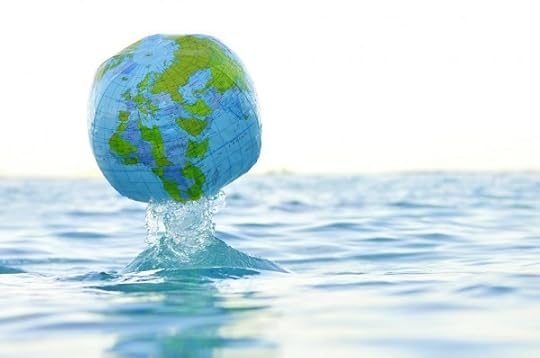
Photo: Nattu
Climate change is scary, and that’s probably the main reason people shrug it off as a problem for the future. “Meh,” they say, “I’ll be dead by then.” This rather perverse brand of apathy is particularly callous if you ever plan on having kids (or, you know, care at all about anyone else’s future other than your own), but it could be understandable if it were at all based in fact.
The problem is you won’t be dead by then unless you’re very old or very unlucky. Because climate change is happening now. For those of us living in the US and other developed countries, it’s slightly less alarming because most of the symptoms of human-made climate change aren’t particularly noticeable yet, with the exception of city-drowning superstorms. But for those of us who like to leave our home countries from time to time, there’s a solid chance we’ll be coming face to face with climate change a lot sooner than everyone else. Here’s why.
1. Sea-level rise is washing away your island vacation.
Sea-level rise is usually what people think of when they think of climate change, thanks to Al Gore and An Inconvenient Truth. And while the threats of sea-level rise are real and significant, they’re usually posed as a problem that’s at least 100 years off.
But a recent, widely published study found that the West Antarctic Ice Sheet is collapsing, the effects of which are probably going to be irreversible. The collapse could result in up to 15 total feet of sea-level rise, which would likely happen in the next 200 to 1,000 years. For most of us, that might sound like it could be catastrophic, but we assume it’s not going to be an issue for either us or our kids.
Of course, this thinking is flat-out wrong. Just because the rise it’ll happen slowly doesn’t mean sea-level rise won’t be a problem we’ll face in our lifetime. Just this year, villagers on the Carteret Islands evacuated their homes permanently, becoming the first official “climate refugees.” Their island home is expected to be completely underwater by 2015. The island country of Fiji — of white-sand-beach and tiki-resort fame — is already conducting relocation programs for its own refugees, and both Bangladesh and Kiribati have climate refugees as well. In 2009, the president of the Maldives made headlines by holding a cabinet meeting underwater to draw media attention to the fact that the tallest point on his island nation is only four feet above sea level, and thus his entire country is set to become a modern Atlantis over the coming decades.
With atolls, islands, and entire countries washing into the sea, travelers are already losing potential destinations — you know, in case people losing their homes isn’t reason enough to be alarmed.
2. Climate conflict is going to make some places unvisitable.
If climate change means climate refugees, it’s going to mean destabilization in the countries to which refugees flee. And that means conflict. And it’s already happening. The brutal, ugly conflict in Darfur that’s killed hundreds of thousands of people over the past decade is often branded the world’s first “climate conflict” because of the role chronic drought and advancing deserts have played.
The US Department of Defense is already anticipating the knock-on effects climate change may have in exacerbating conflicts. Wars could break out in India, Pakistan, and China because of water shortages, and “desertification” could cause or amplify conflicts in Northern Africa. Hell, even the US isn’t immune: Last year there was a dispute over water rights between Texas and New Mexico.
As all travelers know, places with a ton of conflict are not ideal places to visit — and if that means vast countries like China and India become off limits, we’d all be poorer for it.
3. Air pollution and deforestation are making a lot of places pretty ugly.
In a more aesthetic sense, climate change is going to ruin the looks of a lot of cool places. Aside from the likelihood of extreme weather destroying landmarks and damaging culturally significant cities, things like pollution, desertification, and deforestation are going to deprive us of what otherwise might’ve been some pretty spectacular views.
A great example is Shanghai. The Pudong skyline is one of the most staggering feats of human engineering in the world. It contains several of the world’s tallest and most spectacular skyscrapers. It’s an incredible view from across the Huangpu River. But nowadays, the skyline is usually only visible behind an ugly haze of air pollution. The same is true of Beijing’s Tiananmen Square and the Forbidden City, and the US city of Los Angeles has long been known for its smog.
Deforestation is another good way to make beautiful things ugly. Around 20% of the Amazon rainforest — probably the top natural wonder of the world — has been destroyed in the last 40 years, and Indonesia has been illegally destroying forests even faster. Not only does this worsen climate change, thus contributing to our previous points, but it also kills off a lot of really incredible wildlife, like tigers, orangutans, and jaguars, which are popular among animal-loving tourists.
This means you need to start traveling now.
Basically, if you wanted to see the world in a semi-preserved state, you needed to start traveling decades ago. Now, climate change is only going to make things worse for travelers and, more importantly, for humanity and all life on Earth as a whole. There are two basic things you can do about this as a traveler. First, you can start traveling now to see all of the sights that’ll be disappearing in the next couple centuries (but, please, travel in a way that doesn’t make the problem worse, and try to be a greener traveler).
Second, you can start working to fight climate change. This could mean supporting organizations like Greenpeace or the World Wildlife Fund, or it could mean writing your Representative and urging responsible steps towards addressing climate change.
Some of the effects of our effect on the world’s climate are going to be felt regardless, but we can start working now to preserve a beautiful, travelable world for ourselves and future generations. 

Bad news: Shark Week is lying to you
Now that we’ve reached the end of Shark Week, I suppose it’s okay to tell you: Shark Week is lying to you. Or actually, the Discovery Channel is lying to you. Even though there is an audience that’s plenty big enough that would enjoy actual nature documentaries about the already-fascinating sharks, the Discovery Channel has realized it can get great ratings by creating sensationalized, dramatized, or patently false documentaries about “megasharks” or “serial killer sharks.”
It’s really a shame they’ve gone that route because the public does need a lot of education about these misunderstood creatures, and there is no reason that people wouldn’t enjoy that just as much as the documentary equivalent of Sharknado.
In this video, Vox explains why the Discovery Channel is full of it. Hopefully the attention that videos like this bring to the issue force them to go back to producing actual educational television shows. And then maybe they can fill up every other week of the year with a specific animal: “Gator Week” would surely be a hit. 

Craft beer guide: Salt Lake City
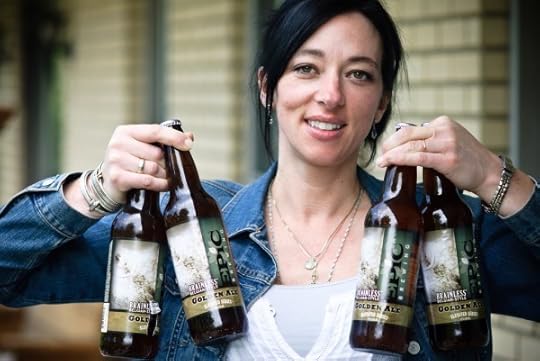
Photo: Don LaVange
Craft beer is gaining a solid footing in Utah — no small task in a state where restrictive alcohol laws are slow to change. But progress is being made, and local breweries are leading the movement by producing high-quality beers.
Here’s what you need to know — and where you need to go — to pay proper respect to the local craft breweries of Salt Lake City.
Utah’s high-alcohol brewery: Epic Brewing
Begin early. Visit on a Friday or Saturday for a brunch beer at Epic Brewing Company. Epic exclusively brews high-alcohol-content beer.
You’ll see a taco cart across the street, but resist the temptation — under Utah state law, you’ll be required to order food with any high-alcohol beer. Enter the brewery on the south side of the building to visit their “tap-less tap room.” You may be asking yourself what a tap-less tap room is. Again, this is Utah state law and requires some explanation. Beers on tap are limited to 3.2% alcohol by weight — equal to 4% alcohol by volume (ABV). Pouring from the bottle allows Epic to serve beer that’s higher than 4% ABV.
Epic’s tap-less tap room is small. Really small. There are only six seats available. The smallness creates an unavoidable neighborly vibe that facilitates friendly conversation. On the back wall is a large collection of stickers from breweries across the country. Play a game while you wait and locate the stickers of all the breweries you’ve been to or drunk. Spend time chatting up the staff. Sam or Eugene will be more than happy to walk you through the Utah beer scene. Owners David Cole and Peter Erickson have also been spotted in the tap-less tap room doing office work, along with other administrative personnel.
Enjoy 4oz tasters of every available Epic beer, typically 20+, or enjoy it by the glass. Start with Epic’s award-winning Brainless Belgian-style Golden Ale and end with the behemoth Big Bad Baptist. The former’s name is a giveaway: golden color, brewed in the Belgian style, with a slight taste of hops and spices and toasty malt overtones. The stronger Big Bad Baptist will taste like your after-dinner coffee paired with a dark chocolate bar and a shot of whiskey.
Follow this routine throughout the day: Start with the lower-alcohol and less-hoppy beers, then move your way up. By doing so, your palate won’t get ruined early and the beer won’t taste watered down.
Utah Brewers Cooperative: Squatters + Wasatch
Head northwest toward Salt Lake — the actual lake — and Squatters, SLC’s most popular brewpub. Together with Wasatch Brewery, they make up the Utah Brewers Cooperative and share a brewery offsite. Being the friends they are, you’ll find both brewers’ beers at each brewpub. (The Wasatch brewpub is located in Park City, outside the scope of this guide.)
Squatters is a large, multi-level brewpub with outdoor patio seating. The place is crowded more often than not, but is particularly busy after concerts and sporting events. The crowd is mostly young adults; the vibe is loud and busy. Servers are constantly slammed, but they’re efficient and will chat you up if they have a spare moment. In the past, the brewpub had a popular flight of beers that was delivered on a ski. Word from Anna, a former Squatters bartender, is that they got in trouble for it a couple years ago because Utah doesn’t allow patrons to have more than two alcoholic beverages at a time.
Again, as per state law, for high-alcohol beer you’ll have to order it by the bottle. Ask for Wasatch’s Devastator (8% ABV). The beer has a cult following for good reason: It’s a creamy, caramelly double bock that avoids a strong taste of booze. Squatters’ biggest beer is the Outer Darkness (10.5% ABV), a Russian imperial stout with a colorful and complex taste palate that includes oaky notes with a touch of fruit.
Responsible brewing: Uinta
Next, take a taxi to Uinta Brewing Company’s Brewhouse Pub. It’ll be worth the trip out to the west side of town. Named after the northeastern Utah mountain range, Uinta brews over 20 different beers relying 100% on solar and wind power. Their flagship brew, Cutthroat Pale Ale, is a standard pale with a tasty malt finish. It’s named after the state fish of Utah.
Attached to the brewery is Uinta Brewhouse Pub, a classic bar with only a few tables. The focus is obviously on the beer, but they don’t skimp when it comes to the food. Tasters of beer are available but only two at a time. Don’t leave without shopping in their beer store, and take home some of the local favorites: Bristlecone Brown Ale, Baba Black Lager, or the heavy-hitting Dubhe Imperial Black IPA.
Small but fierce: Avenues Proper
Size and scope of reach isn’t the only thing important when it comes to craft beer. Utah’s smallest craft brewery, Avenues Proper, is located in one of Salt Lake’s oldest neighborhoods near the state capitol. If Salt Lake City has a Cheers, then this is it. For the residents of “The Avenues,” Avenue Proper is their bar.
Neighborly but small, it focuses on creativity and quality in both beer and food offerings. Munch on duck-fat popcorn as you sip one of the 10 rotating beers on tap. The flagship brew is the Proper, a smooth golden ale with a tangy, citrusy, zesty hop flavor. It’s on tap year-round. If you get lucky and the Oatmeal Red is back on nitro tap, don’t pass up the opportunity to taste this wonderful hybrid between an oatmeal stout and an amber.
Fortunately for Salt Lake City, gone are the antiquated days of “private membership” bars (where patrons had to pay a nightly “membership” fee), and here to stay are producers of excellent local beers. 

4 facts of Mexican-American life

Photo: Narith5
1. You have at least two family members who are here illegally.
Here’s a dose of reality for you gringos: Even the most patriotic of us Mexican-Americans has a couple of members in our family who are here illegally. We also think there’s nothing wrong with them being here illegally, because we know they’re just trying to build a better life for themselves. We’re not going to single them out or tell anyone who doesn’t need to know. It’s tough enough making it in this country without having any documentation, let alone when la migra is coming after your ass.
For Mexican-Americans, immigration is always a touchy issue. Candidates who go on Mexican television get drilled and called out for what they said to appeal to the Fox News-consuming demographic. We’re not as far removed from our roots as those of European descent who aren’t even sure what country their family is from originally.
For us, an illegal immigrant isn’t some random statistic that conservative pundits always seem to bitch about stealing lucrative ’merican jobs like picking strawberries and working as a dishwasher at Denny’s. No, he’s our cousin Pepe who works two full-time jobs for minimum wage as he struggles to raise a family of four. Or our uncle Pancho who snuck into the US 25 years ago, worked his ass off, saved his money, got his citizenship, and now owns his own business. Or it’s me, who came here illegally at age five, grew up as an American, got his citizenship, served in the military, and proved he was as much of a fucking American as any of you.
2. Come 7pm on a weekday, it’s novelas time.
“Es tiempo para mis novelas,” your mom will say as she changes the channel to Univision.
The Mexican household is full of workers, and when a person works all day, they need some sort of way to unwind. The men have their nights of drinking themselves to oblivion, while the women have their novelas. Novelas are Mexican soap operas that air weekdays from 7-10pm.
While it isn’t too bad these days with the internet and cheap televisions, it was pure hell for a young Mexican kid growing up in the ’90s when the house only had one television set. Grandmother, mom, and aunts would be glued to the TV as they watched the dashing middle-aged Erik Estrada juggle the complications of having a young girlfriend while dealing with his kids and ex-wife. Or watching the drama unfold as a lowly india marries a big-city lawyer and struggles to be accepted into upscale Mexican society.
Mexicans are a passionate, fiery people, but the reality of the hustle and bustle of everyday life working long hours for low pay leaves them bored. The Mexican psyche needs its daily dose of drama, scandals, and gossip to function properly.
3. Every little thing you do will be gossiped about to the point that even your relatives in Mexico will know.
This probably isn’t unique to Mexican-Americans, but it sure is true. The Mexican-American family thrives on gossip. Whatever happens to you or any other family member, no matter how insignificant, will be talked about repeatedly via telephone with each other member of the family. When they’re not discussing what happened in their novelas, you can best bet they’ll be discussing you.
As a kid, I would see this occur: My mom would be talking to her sister Lupe for 30 minutes. At the same time, her two other sisters — Pulga and Debra — would be talking to each other. My mom would finish her call with Lupe. Then she would call Pulga, who’d just finished her phone call with Debra. Lupe would then call Debra. My mom would have the same exact conversation, except Pulga would add details. They’d finish their conversation 30 minutes later. Then my mom would call Debra and begin to gossip with her while Lupe and Pulga called one another. This happened nightly.
That’s only the beginning. If the gossip is extra juicy, they’re going to each be calling their cousins. The gossip network is vicious and has many branches and offshoots. Word will get around, and one day you’ll be hanging out with a second cousin of yours you haven’t seen in seven years and he’ll say, “Hey wey, I heard you got arrested a while back…”
4. Your old clothes go to Mexico.
If there’s one thing you’re aren’t allowed to do in a Mexican household, it’s throw away your old clothes or shoes. No fucking way. If your old clothes are somewhat serviceable and you don’t want them, they’re going into a box. That box isn’t just a cardboard square used for storage; it’s a lifeline of new goods for your more downtrodden relatives to wear.
Even the most industrious and Americanized of Mexican families has those members who stayed behind in Mexico. Since Mexico doesn’t always offer the best opportunities for advancement, it’s sometimes hard for a man to secure a decent-paying job. Or just like any other family, we have members who suffer from their own demons and vices that prevent them from keeping a job. La Doña of the family always feels it’s her duty that even the lowliest and most undeserving member of the family have the bare essentials: clothing and food.
It’s common practice for the Mexican-American family to go to Costco and stock up on food and other assorted goods to fill the truck up with before visiting Mexico. As much as there’s a cliché that everything is cheaper is Mexico, it isn’t true. There are a lot of products that are significantly less costly in the US than they are down there. Food bought in bulk and old clothes are given to our family members who aren’t living quite as large as we do here. While we know it’s not much in the grand scheme of things, we help out in whatever little way we can. Porque la familia es lo más importante. 
This post originally appeared on Thought Catalog and is republished here with permission.

India's 'Forest Man' [vid]
Forest Man is a short documentary on Jadav Payeng, a man who has, since 1979, been planting trees on a quickly eroding island in the Brahmaputra River in India. Over the years, he has managed to plant a forest bigger than New York’s Central Park. If you’ve got a few minutes, check it out, and follow the film on Facebook here. 

Matador Network's Blog
- Matador Network's profile
- 6 followers



